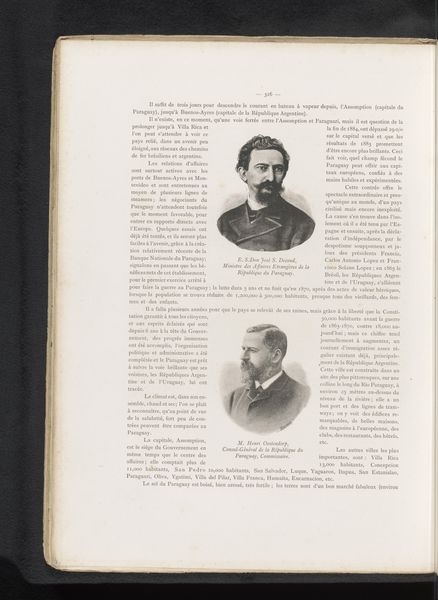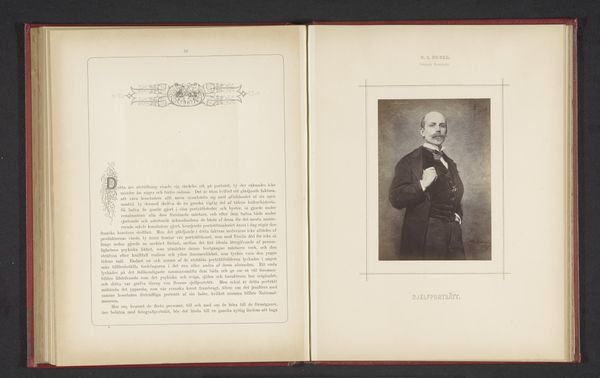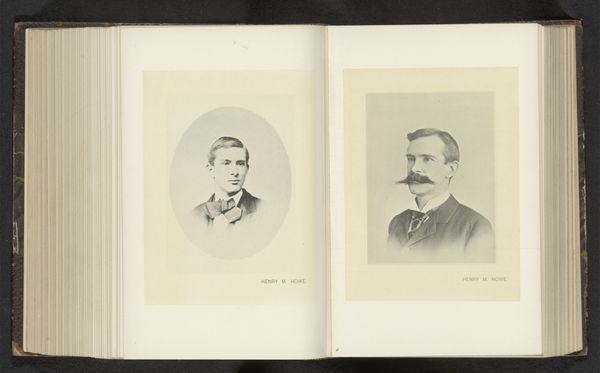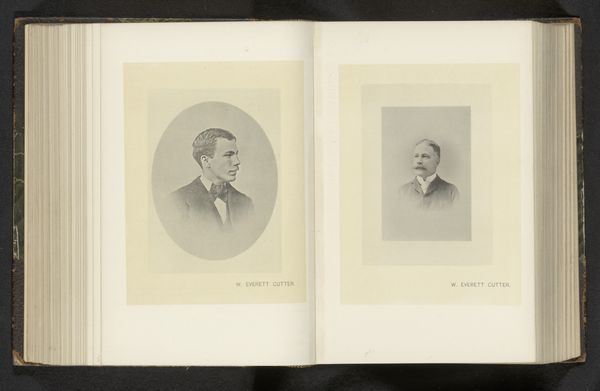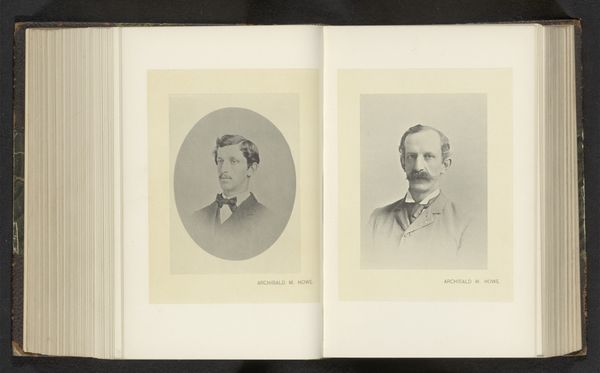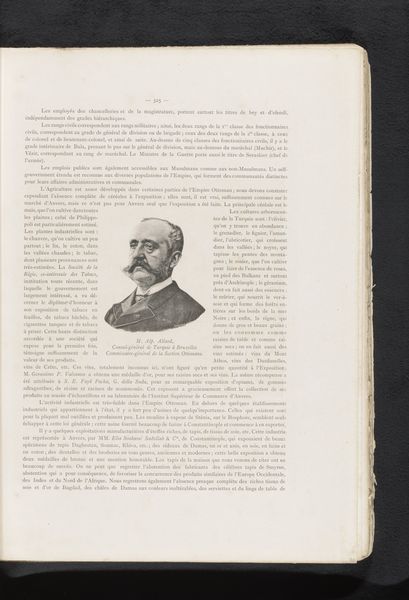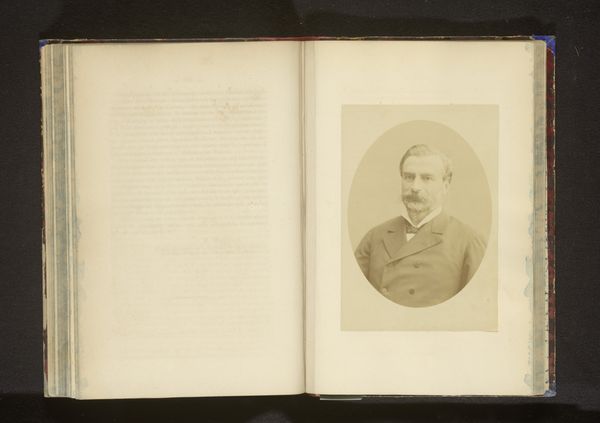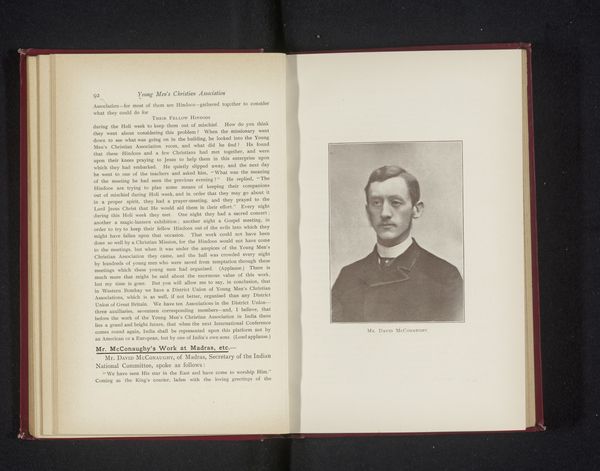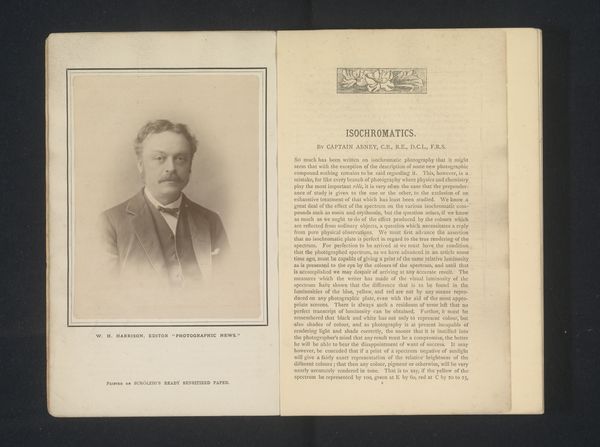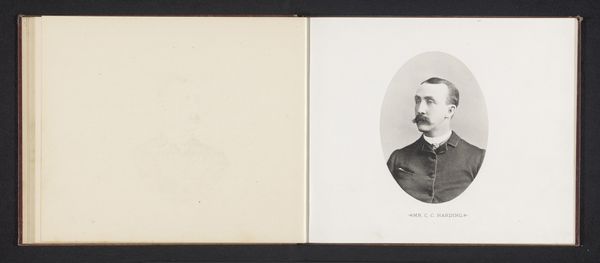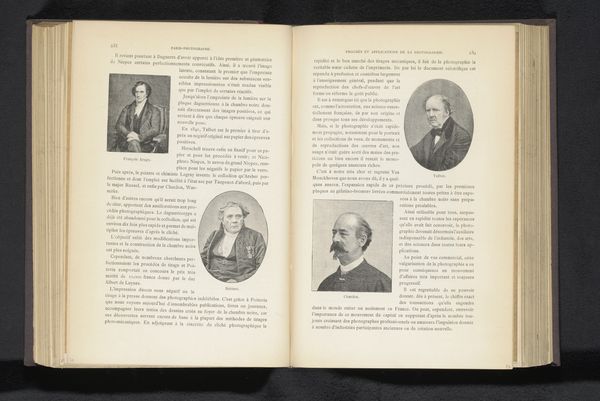
Portret van Nicolas Fish II en een reproductie van een schilderij van een portret van Lysius Salomon, president van Haïti before 1885
0:00
0:00
print, photography, collotype
#
16_19th-century
# print
#
photography
#
collotype
Dimensions: height 411 mm, width 302 mm
Copyright: Rijks Museum: Open Domain
Curator: This fascinating historical document, created before 1885, presents "Portret van Nicolas Fish II en een reproductie van een schilderij van een portret van Lysius Salomon, president van Haïti". It's a collotype incorporating both print and photography. What catches your eye about it? Editor: It’s intriguing. A face within a face, or rather, two faces nestled into a historical artifact that already seems layered and storied. A curious doubling that suggests nested histories, like a set of Matryoshka dolls of memory. Curator: Indeed. Nicolas Fish II, alongside a reproduction of a portrait of Lysius Salomon, President of Haiti, each man seems positioned to reflect different aspects of political representation in the late 19th century. Nicolas Fish's presence alongside Salomon—he was Minister of the United States in Brussels—creates an interesting juxtaposition. What does this image suggest to you about Belgium's engagement with the Americas in that period? Editor: Belgium, a relatively new nation at this point, eager to play a role on the world stage. This portrait pairing speaks, perhaps, to ambition, to connection, and maybe even a subtle sense of self-importance. Notice how both men seem to be wearing a military-style garb in their portraits. Do you suppose there were symbolic choices here relating to post-colonial political identity and global status? Curator: Absolutely, the collotype, then a relatively new technology, allows for detailed reproduction, and choosing that technique speaks to the intention of meticulously preserving and disseminating their image. In that respect, it's almost as if they're creating an ideal—crafting and reinforcing a certain visual legacy for future generations. What legacy do you feel this visual language suggests? Editor: One of statesmanship, for sure, but also a certain detachment, don't you think? Both men are depicted in rather formal, stiff poses. I sense more an attempt to project power than an invitation to connect with the viewer on a human level. I get the feeling these faces exist within the archive, speaking more about Belgium than about Haiti itself. What's your read of that today? Curator: I find your reading quite astute. The collotype provides insight into the interplay between international relations and personal representation. Looking at them now, through a contemporary lens, forces us to consider the dynamics of power inherent in historical representation and how a photograph or collotype can carry symbolic baggage through time. Editor: Absolutely. These images spark important conversations about power and perception.
Comments
No comments
Be the first to comment and join the conversation on the ultimate creative platform.
